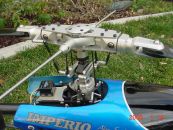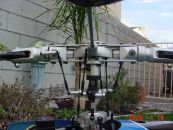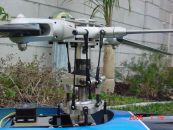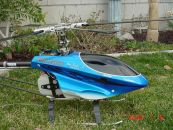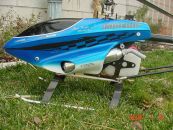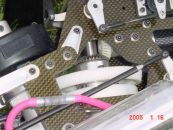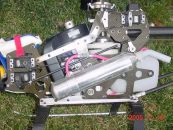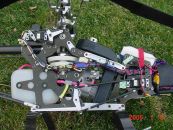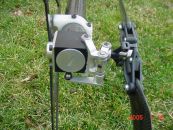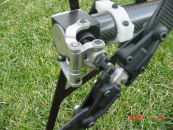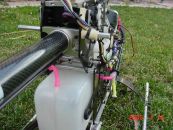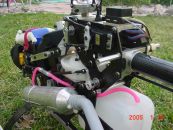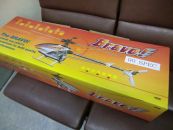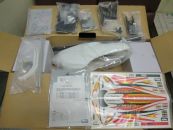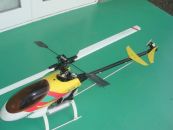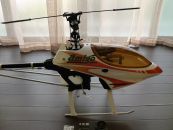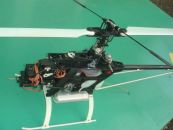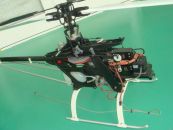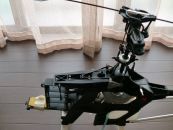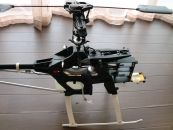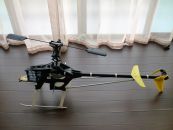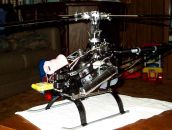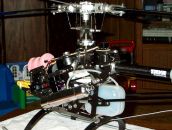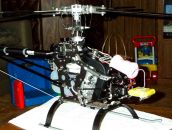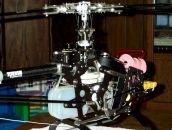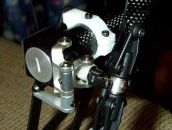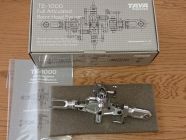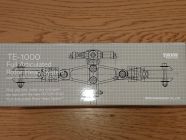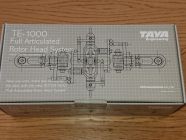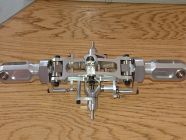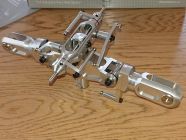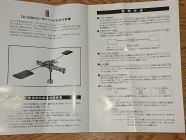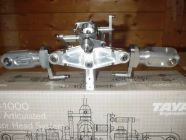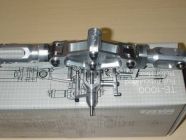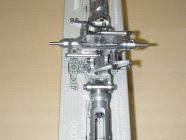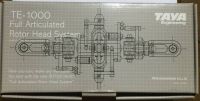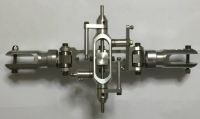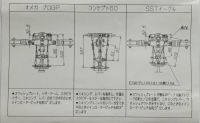TAYA
Taya Imperio (1999)
Radio Control Technique magazine (September 1998 issue) ran with a feature that presented Mr Shigetada Taya's newly released 3D computer rendered graphics of the two new helicopters produced by his design house; one of them being the Amigo/Raptor and the other, the Imperio. As we all know, the Raptor was taken up by Thunder tiger and became a very successful helicopter due to its very inexpensive cost and good flight capability. Though running in parallel, release of the Imperio was delayed during the introduction of the Raptor so that only 3D sketches of the of the proposed second model were being released. Development of the Imperio and production techniques also caused delays however, as the first top of the line helicopter bearing Mr Taya's name the delay was more than understandable. Finally in mid 1999, Radio Control Technique showed photo's of an actual Imperio along with a hefty price tag of 280,000yen (Approximately US$2,800).
The Imperio was supplied in ARF form with the tail removed to allow smaller packing dimensions. All the new owner had to do was fit the engine, tailboom assembly, radio gear, set up the linkages and finish off the canopy.
Construction was very 'high tec' with CF frame sides and many aluminium parts including control arms. Rotor head was a full metal unit and the tail rotor linkages were also metal though control arms and blade holders were plastic?
Comparison of Space baron and Imperio.
I notice that the basic design of the Imperio is nothing new. Angled engine placement, angled main gear with planetary reduction gears, non sliding swashplate and "shaft within a shaft" pitch mechanism, these are designs from the Kalt Space Baron. I conclude that the design of Imperio is nothing new, just a recital of the Kalt Space Baron main mechanics design , sized at 60 class machine and used graphite and CNC metal for execution. The tail boom was a hefty 24mm diameter, and tail was driven by a carbon shaft with dogbones at the end. Like the main frames, the tail unit came preassembled too. The canopy was made in FRP.
| Main Rotor head | |
| Main Rotor diameter |
61.4 inch |
| Tail Rotor diameter | 10.2 inch |
| Engine |
.60 to .90cu in (10 to 15 cc) |
| Flying weight | 10.8 Lbs |
| Fuel capacity | |
| Radio | Six channel with five servos |
Assembly
The manual was written unlike other instructions. Due to the Imperio comes pre-assembled, there are no step by step instructions for the owner to follow. The manual was organized by different part of the helicopter, and even though detailed drawings are provided to show the components that made up the Imperio it was not well organized to ease assembly. For example, the mounting of the fan and clutch to the engine is at the last chapter, while servo and pushrod installation is at the middle, and the mounting of the tail boom is at the front. It would not be logical to follow the sequence of assembly in the manual.
The first part of the assembly dealt with engine installation. The Imperio uses a very nicely made metal fan, and the fan and fan hub was machined in one piece. The clutch of the Imperio is a special type. In regular helicopters the clutch are usually one piece design made by spring steel. However, the clutch of the Imperio is two piece design and mounted separately on both lower side of the fan hub. Its more like the clutch design on cars.
Taya Bravo
Taya Amigo
Alan Szabo Jr 's Imperio 60
Note the droop of the main blades; reason is because the rotor head is dual flapping rotor and without dampers so the stiffness is determined by head speed. Once you reach about 1800 the head is virtually rigid because of the large offset of the flapping hinges.
TE-1000 Rotorhead
